Liz Reed first studied to be a painter at Carnegie Mellon University in Pittsburgh. Then, it was only after selling her gallery and framing business she had been running for 25 years that she finally took the plunge into serious photography and her other love, gardening. “My photography business developed simultaneously with my garden design business, about 6 years ago. Though I’ve always been both a photographer and gardener, I started making time to do both more seriously after I sold. One of the reasons for selling it was because I was frustrated with not having time to implement the visual ideas which kept pulling me.”
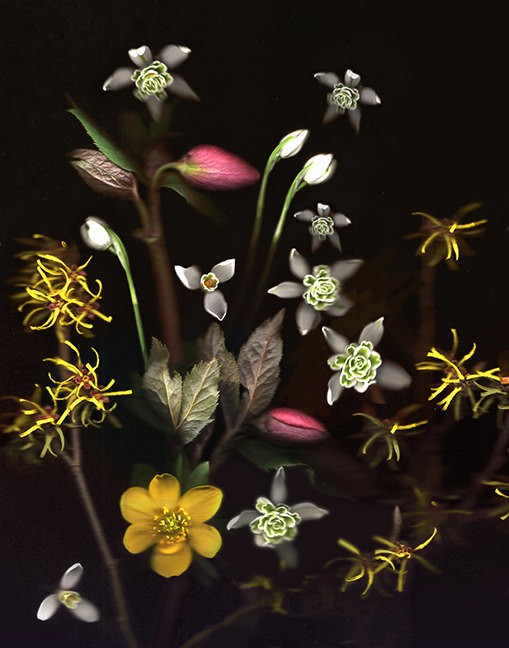
gardencapture – april flowers
It was those creative urges that led her to use quick methods of image capture. “I thought I would start painting again, but my subjects seemed so fleeting; plant stages would disappear within a few hours. I started doing photoscans to document these fabulous blooms and compositions I found in the garden, then continued refining and studying the process.” Liz then took this one step further by making compositions of blooms on the scanner bed to be evocative of the season that they were picked. She now has a series of these, named for the month that they were taken.
Despite her initial reasons for using photography to capture the images, she has now found aspects of the process even more time-consuming than painting. “The more you create, the more you see, and, I find, the more critical you become of the results. So, the work mushrooms. I started doing traditional photography, especially macro, as another way of expressing plant material. Some images will haunt me for weeks and weeks before I’m able to express what I meant. This is ironic, since I returned to photography instead of painting for the ‘quick capture’. Sometimes I think, heck, why don’t I just paint it!”
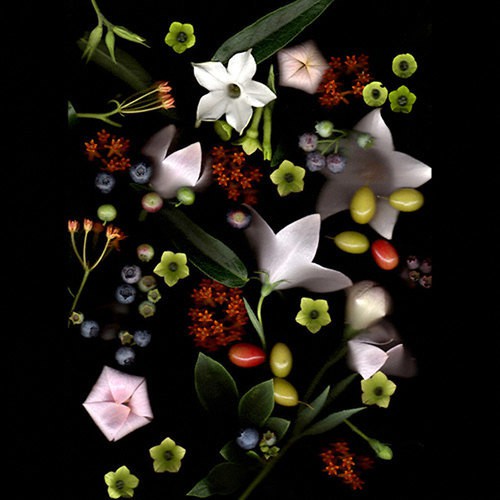
gardencapture – july garden tapestry
“The hardest thing has been the learning curve of making a good print. The edits for printing are completely different from the edits you create to be seen on computer screen. The image varies with paper choices, with different printers, with different color profiles which professional labs use. I get extremely impatient with the technical details of printing. But, the best part is when I meet my own expectations, when the visual result is exactly what I meant. It happens a little more often than it used to.”
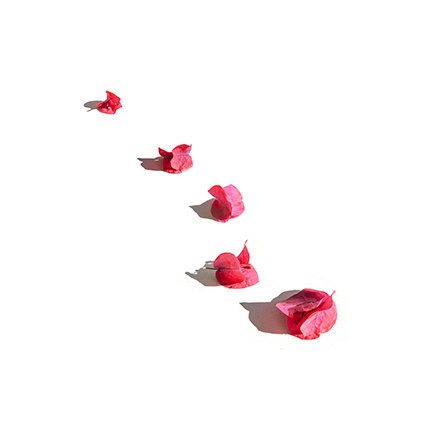
gardencapture – bougainvillea trail
Garden and photography are inextricably interwoven for Liz. “Designing a garden is very much like creating a painting or photograph. It’s an orchestration of many design elements- composition, color, texture forms in space. With gardens you have the added considerations of three dimensional space and time, so there is more to manage. I try to create a sequence of interest in gardens over time, usually through color and expected growth. I start with some essential structural ‘bones’ and ideas for a garden, then I respond to the results. Nature responds and I respond back, it’s a building process.”
“Making photographs feels more and more like I’m building, especially as I’m learning to use more photoshop techniques and build in layers in the virtual darkroom. Then there is just the physical part of being immersed in interesting natural materials. I’m constantly scavenging bits and pieces of buds and blooms and shoots in every stage of growth as I prune and clip and plant. I do a lot of physical follow-up work in gardens I design for clients. I always say I’m going to do less, because it takes a physical toll, but the truth is I’m drawn to hands on tasks and I would miss the immersion in all this mysterious fascinating stuff.”
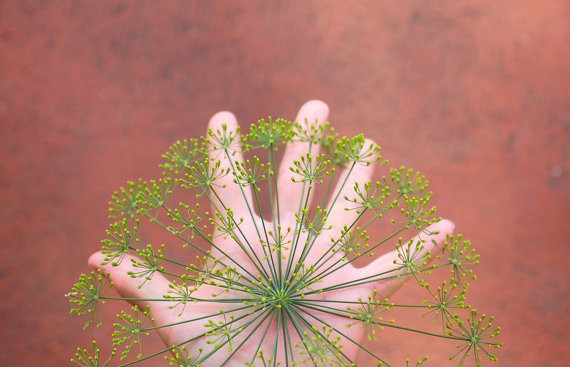
gardencapture – dill blossom
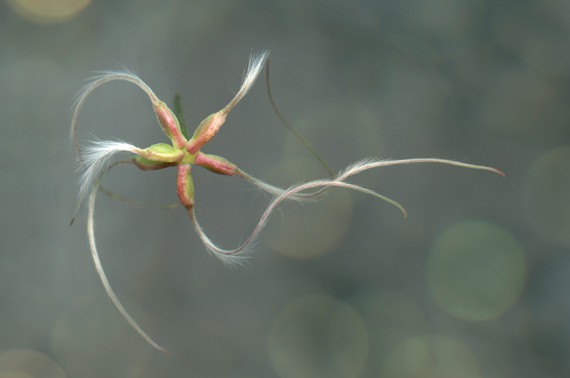
gardencapture – clematis seed (detail)
Liz’s fondest memories of childhood involve encounters with the natural world. “Where I grew up in Connecticut, there were woods behind our house separated from our backyard by a brook. After negotiating the crossing of the brook, I was in a mysterious world of treasures where I built forts with friends, climbed trees, found lady slippers blooming in the spring, birds nests, swung on rope swings from trees, made daisy chains, popped touch-me-not seed pods, collected acorn hats, ice skated on the brook in winter with leaf forms and twigs frozen in time beneath. It was the most freeing and creative time I can remember. It was its own separate environment and space that you could do anything you wanted with, and parents almost never crossed the brook. A stick became a wand , a leaf a hat, a tree canopy a private room.”
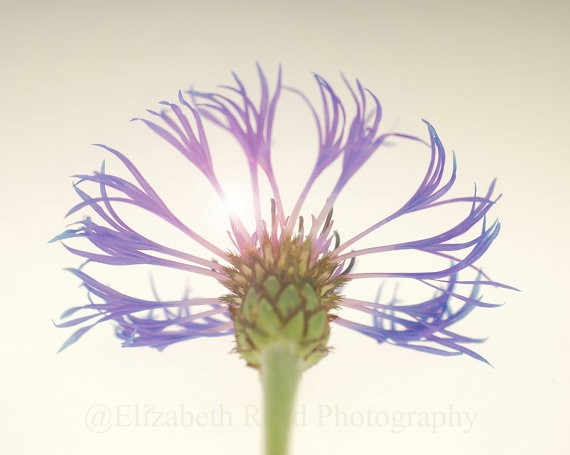
gardencapture – cornflower
Her best advice came to her only recently, from another Etsy seller. ‘Just take care of making the work. Let the viewer do the judging.’ I think that’s good advice to ease self criticism and free up the process.”
You can find more of Liz’s work in her Etsy shop, GardenCapture.

Great article and storytelling. It’s nice to hear about another photographer’s process, and to have another person understand the struggle and challenges of creating fine art prints!